The most compelling design emerges when we embrace complexity. This summer, eight emerging designers from RISD, USC, UCLA, and El Camino College joined our Los Angeles studio for an intensive eight-week program, engaging in hands-on project work and a research initiative that challenged them to uncover opportunities within the city’s inherent contradictions.
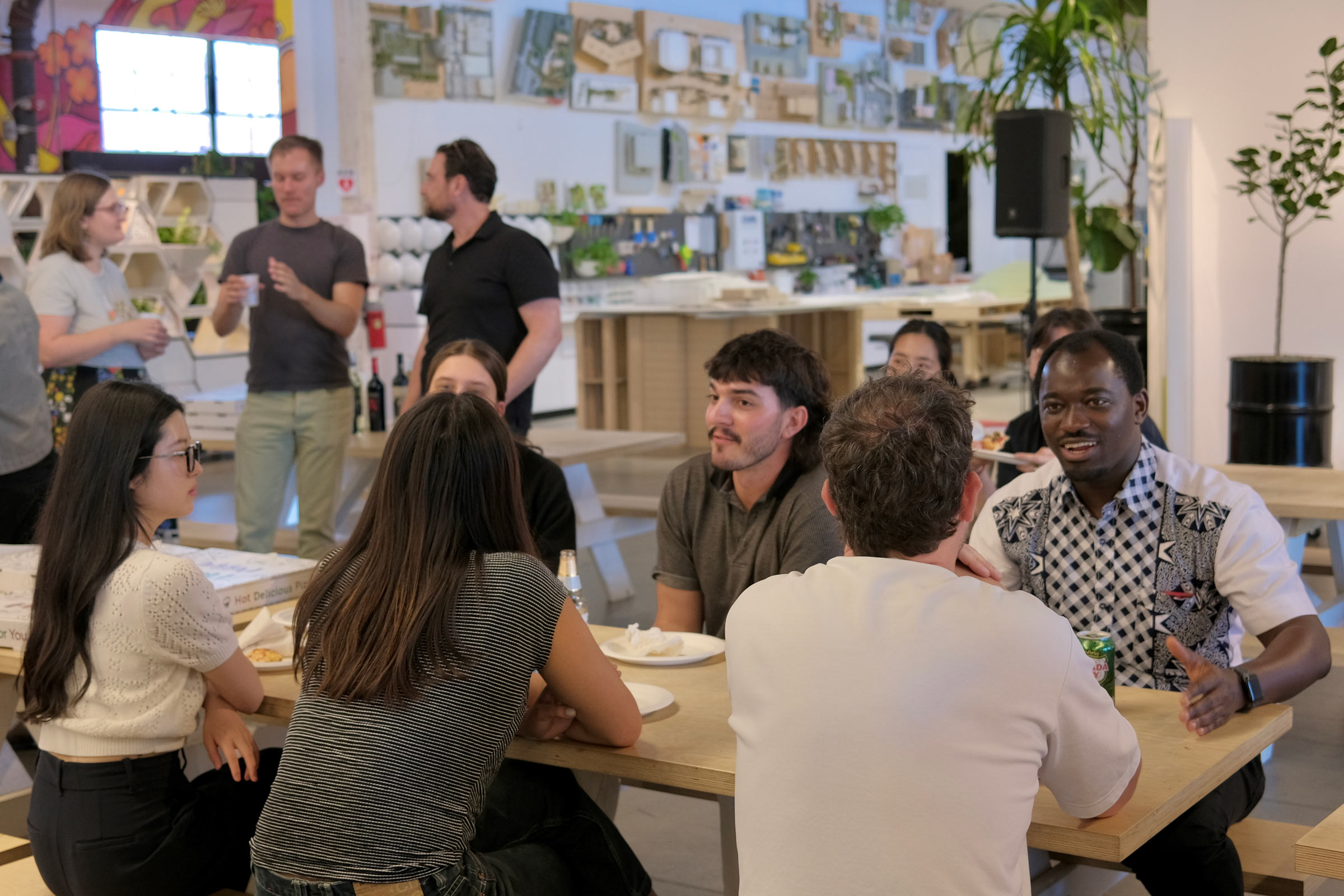
Intern welcome picnic at RIOS' LA office.
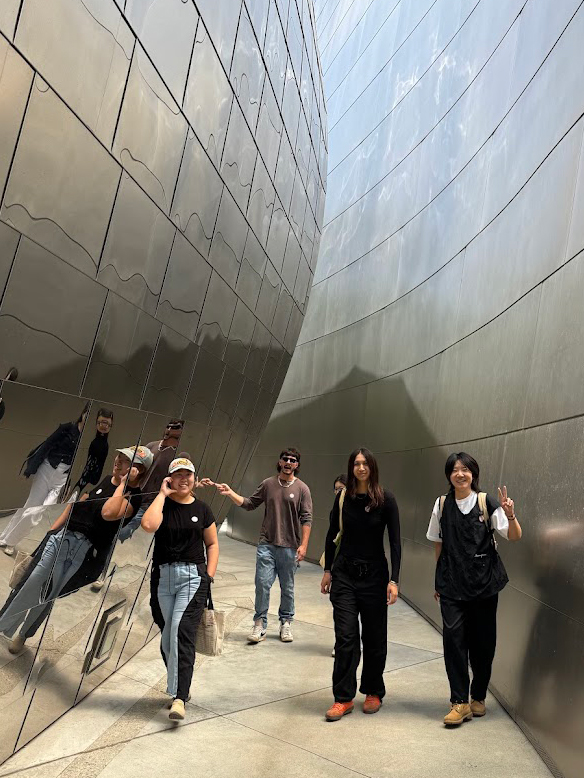
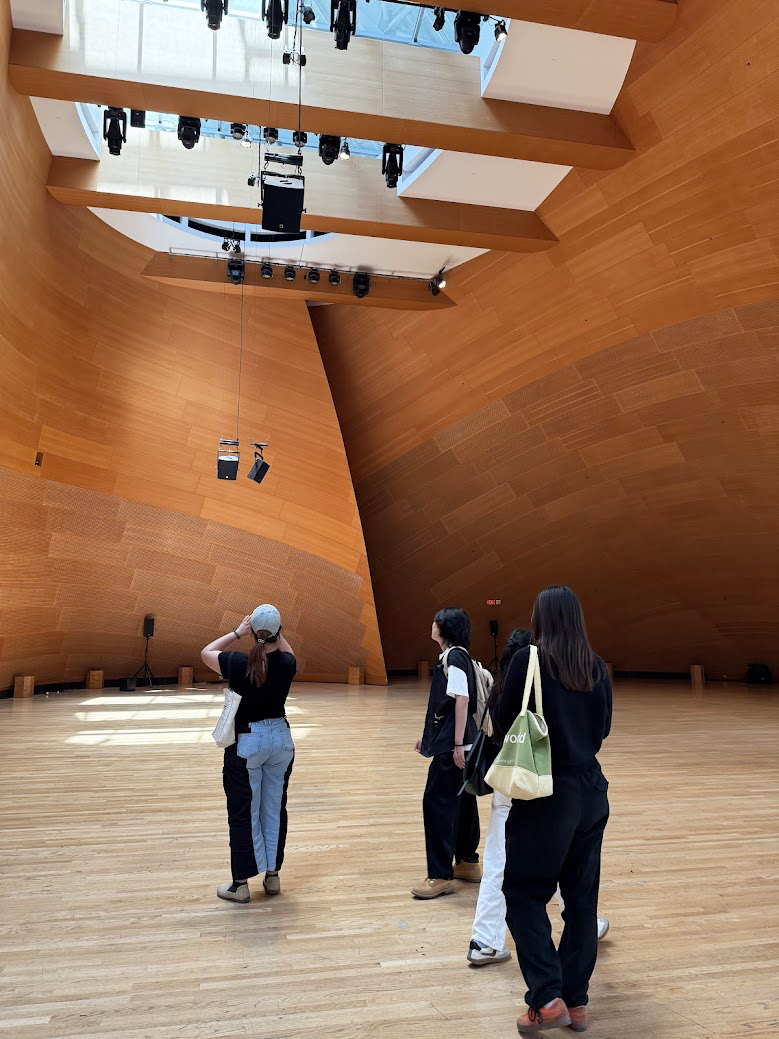
Field trip exploring downtown LA's cultural corridor.
Los Angeles is a city of paradox, where nature and urban, disaster and healing coexist. Our summer design internship asked a fundamental question: How do these tensions become the foundation for transformative urban design?
Working across three research streams—Planning, Culture, and Nature—our interns conducted mapping exercises to study the city’s evolution and reimagine new possibilities for its future. Their research begins to uncover how design can transform L.A.’s challenges into opportunities.
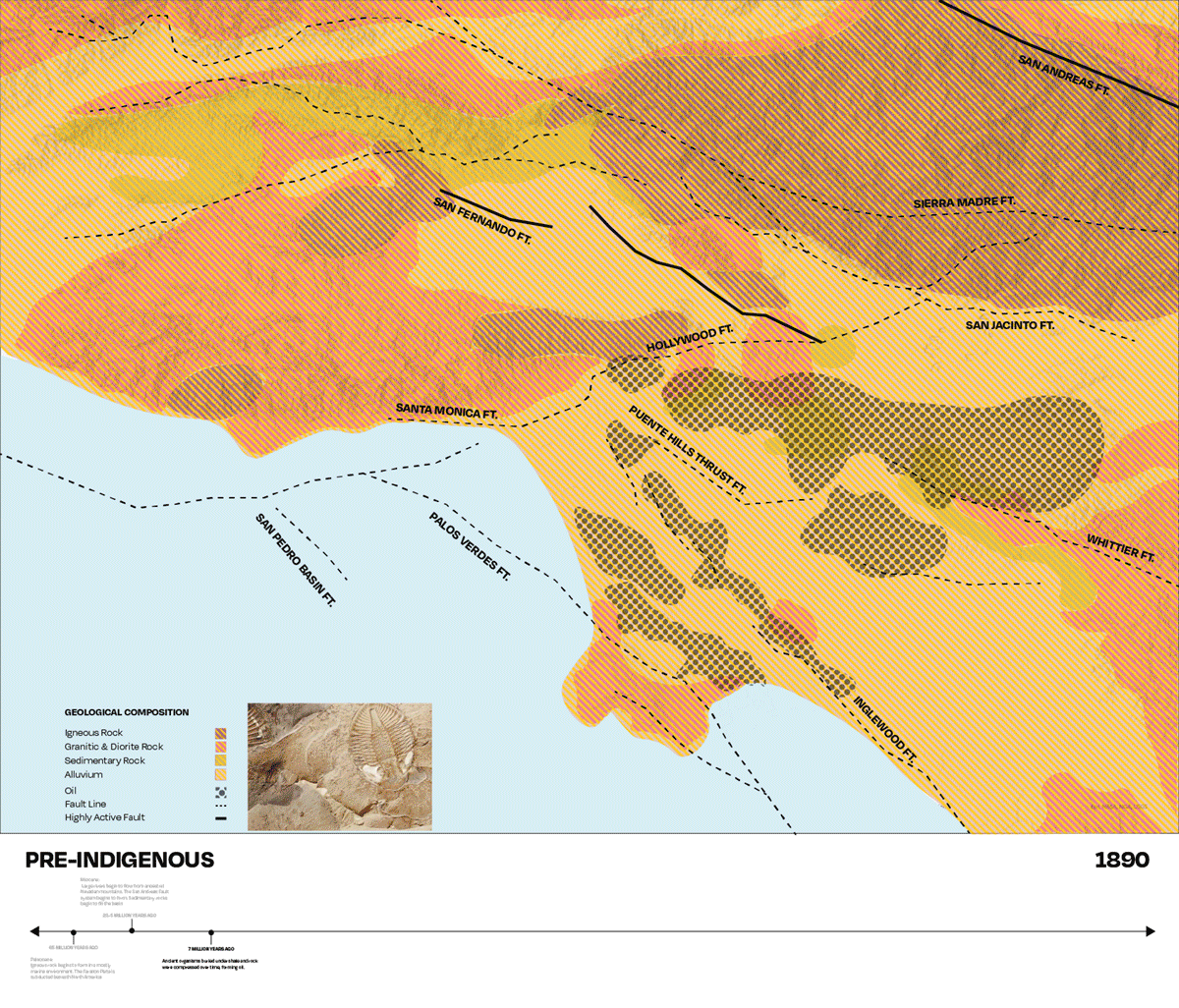
From indigenous to present day, these maps chart LA's layered evolution across planning, culture, and nature.
Team: Morgan Zhang (MLA, UI Urbana-Champaign), Rachel Wang (B.Arch, USC)
Policies, systems, and cultural dynamics have drawn both visible and invisible boundaries that continue to segregate Los Angeles’ communities. Decades of speculative urbanism have left the city without a comprehensive plan or a clear voice for stewardship. An emphasis on private ownership and car-centric design produced a sprawl of single-family homes within interconnected yet isolated neighborhoods.
The team focused on L.A.’s overlooked zones—vacant lots, underused open spaces, and forgotten corners—to find opportunities for reconnecting communities. Reclaiming these areas can soften urban edges, improve walkability, and create social infrastructure that bridges neighborhood divides.
They ask: Can LA evolve into a more integrated and accessible city through collaborations that amplify grassroots connections rather than top-down planning?
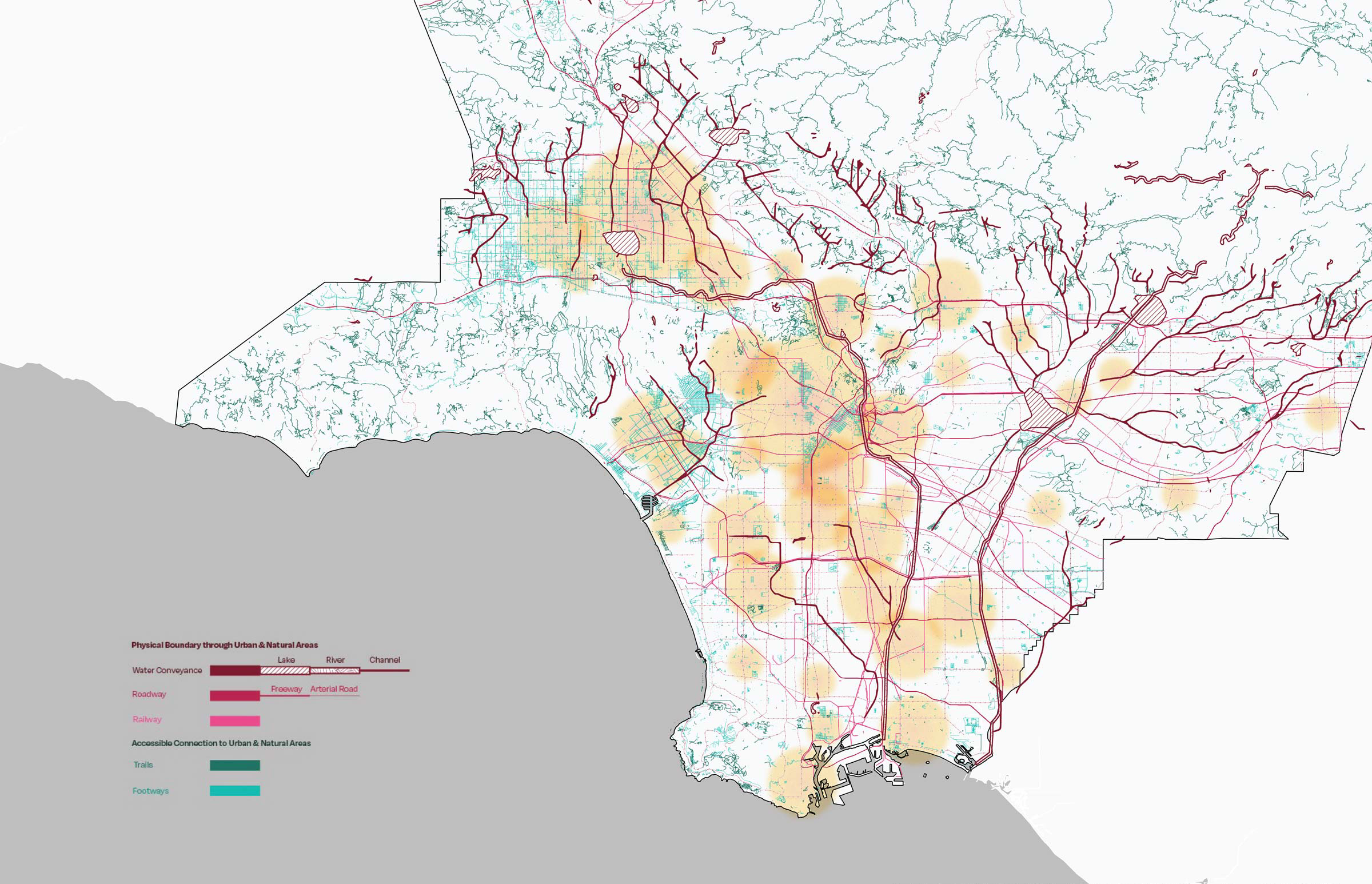
Freeways and railways carve hard boundaries, while trails reveal softer networks connecting communities.
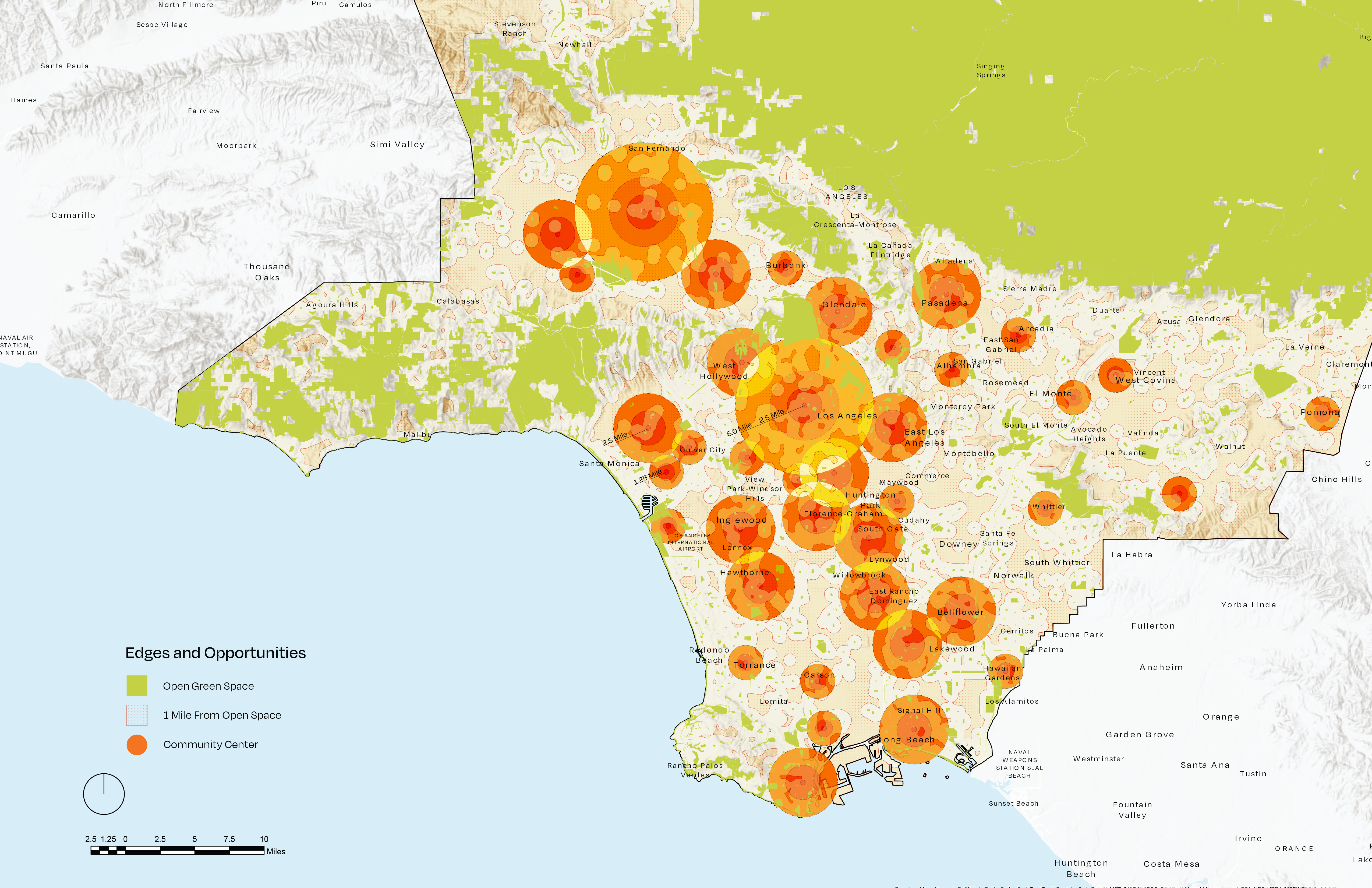
Proximity between open space and community centers shows how accessibility shapes connection.
Team: Stella Rhee (BSID, RISD), Layza Raxon (El Camino College), Brandt Rentel (M.Arch, UCLA)
Los Angeles tells its story through places of resilience. From the Tongva’s enduring connection to the land to Chavez Ravine’s displaced Mexican-American community, the city has long been shaped by cycles of colonization, decentralization, and gentrification. The team mapped how communities have preserved identity over time, tracing threads across both creative and civic life.
Their research reveal a city where culture is never static but constantly shifting. It adapts to new places, carrying the weight of displacement, and reinventing itself. This dynamic condition demonstrates the fluid ways communities weave networks of support, cultural ties, and social lifelines that enable change while preserving identity.
Can a city shaped by displacement hold and amplify many voices? Los Angeles draws its strength from its ability to reinvent itself while carrying forward threads of cultural continuity.
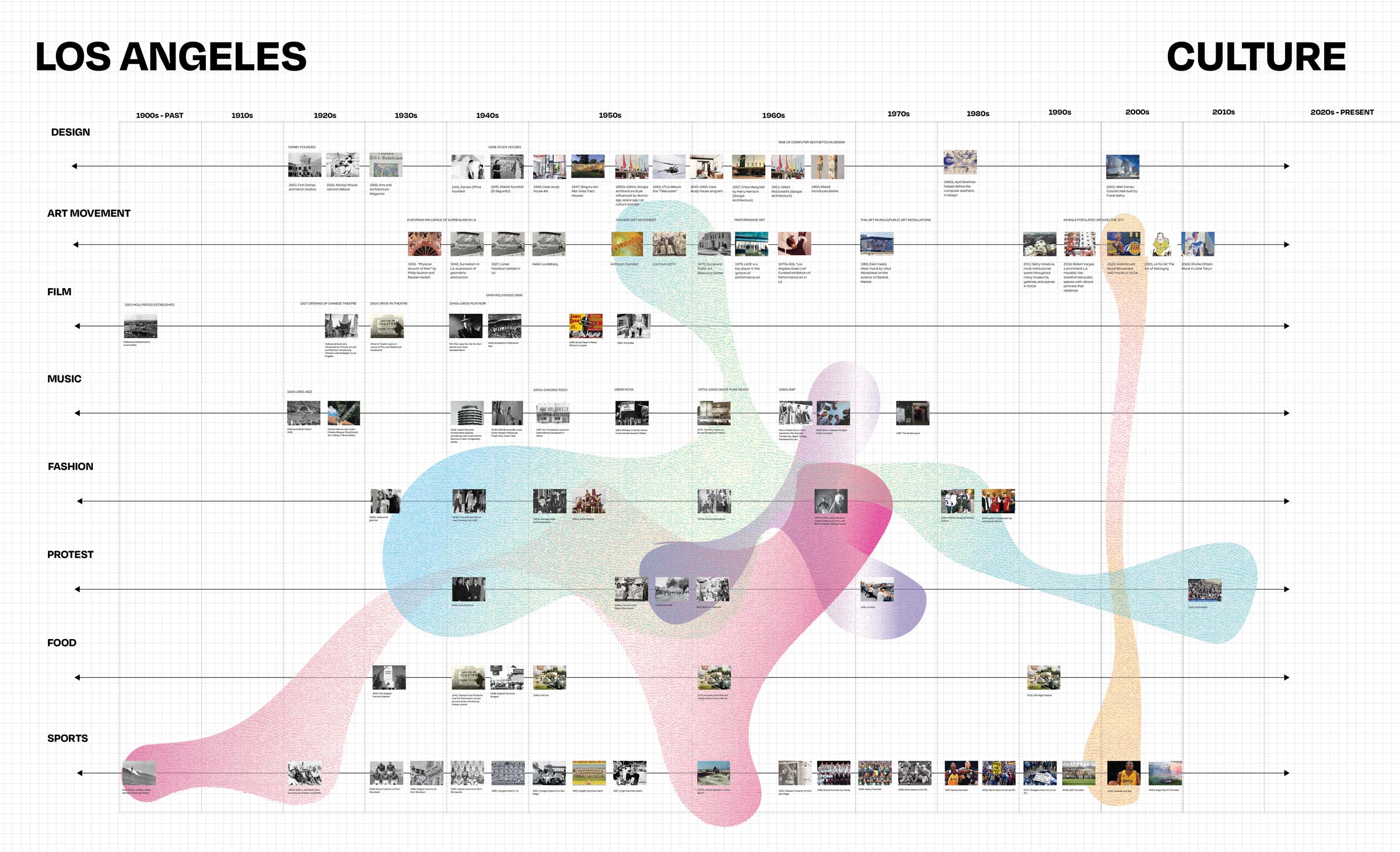
Cultural timeline tracing how art, music, protest, food, and fashion have shaped LA.
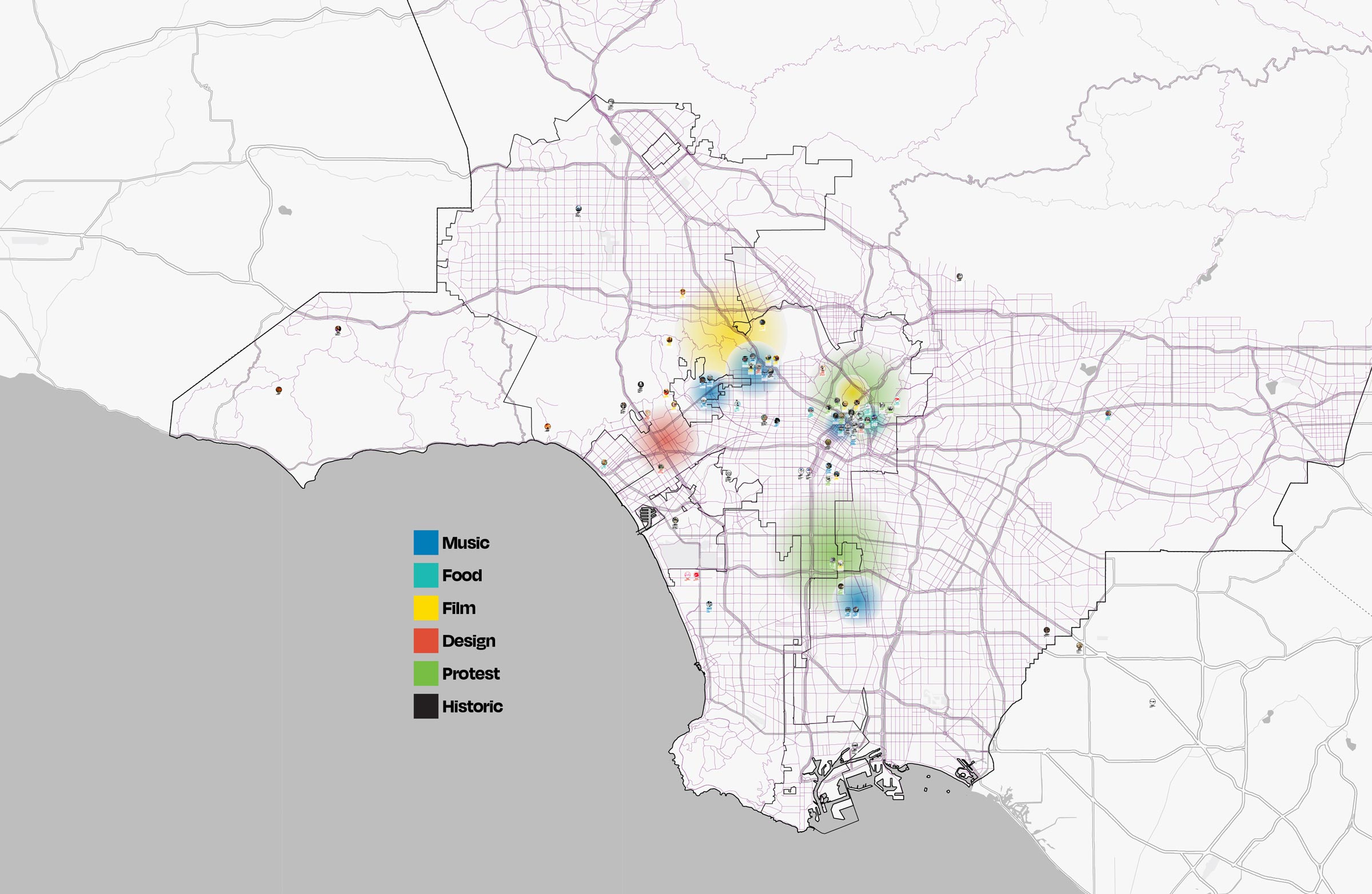
Map of community and creativity hubs across the city.
Team: Anika Villavicencio (B.Arch, USC), Michael Savage (El Camino College), Nick Kohlstedt (MLA, University of Tennessee)
Los Angeles’s nature and climate—long stewarded by Indigenous peoples—were commodified and reshaped into a promise of health, prosperity, and idyllic living. Today, the consequences of that promise are stark: what was once sold as paradise has become the city’s most vulnerable edge.
This ecological history unfolds in three layers:
Within this framework, LA’s ecological paradoxes emerge as opportunities for resilience, equity, and renewal.
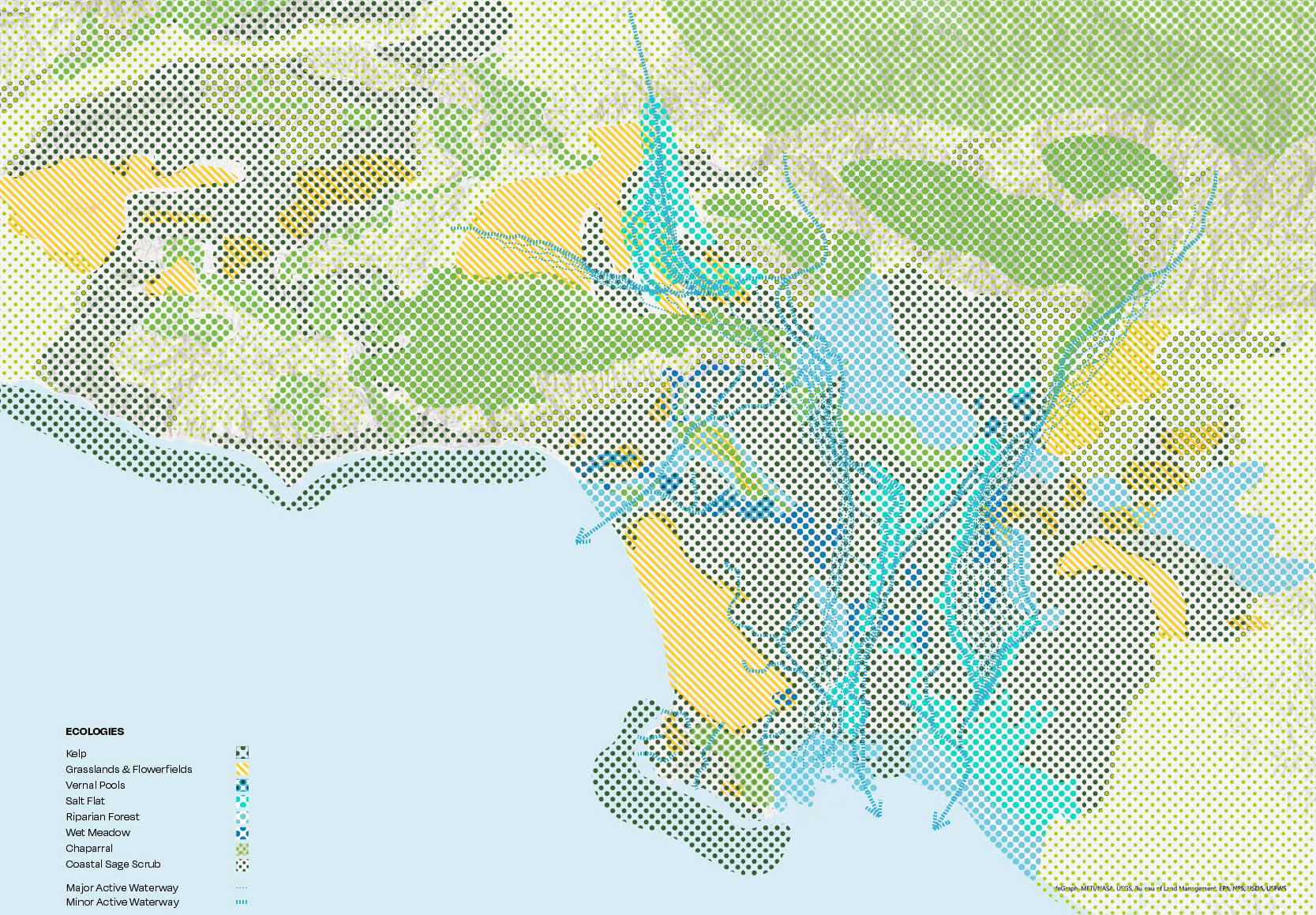
Indigenous ecologies and the movement of water across the LA basin reveal a rich natural tapestry that once defined the city.
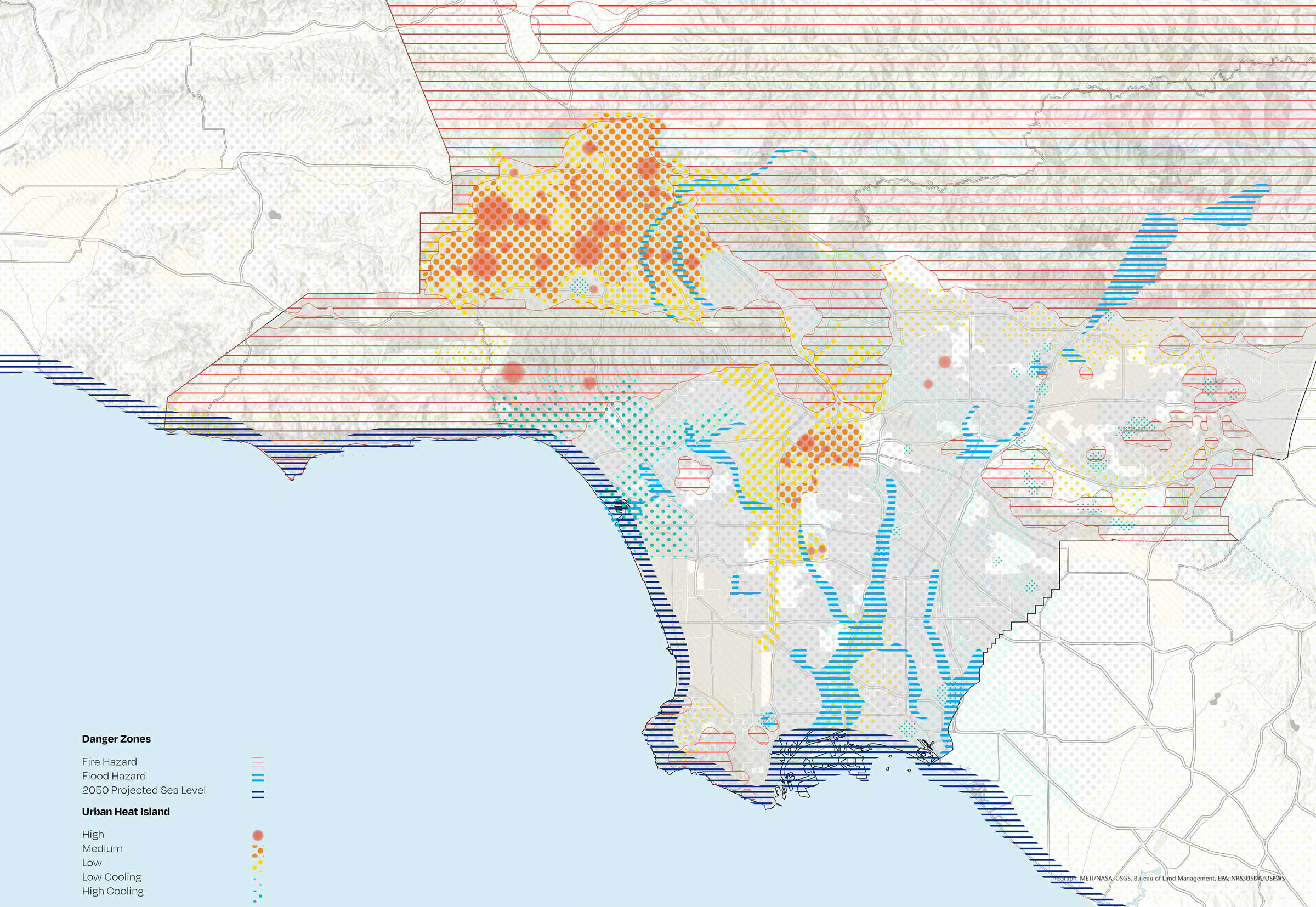
Today's conditions reveal current vulnerabilities: natural threats, danger zones, and heat islands putting communities at risk.
This architecture and landscape architecture summer internship exemplifies how we challenge interns to identify the questions that matter most rather than execute predetermined concepts.
Research is more than a tool for our internship program. It deepens our understanding of place and strengthens our practice. It equipps us to read, analyze, and respond to the complex interplay between natural and human-made environments.
Our 2025 cohort developed the critical thinking that defines transformative design practice. It also reveals how the most impactful urban design solutions emerge when young designers grapple with real complexity. Their work reminds us that L.A.’s greatest challenges are also its most fertile ground for innovation.
Interested in architecture, landscape architecture, or urban design internships and career opportunities? Learn more about our career opportunities and emerging professional development here. Follow our ongoing projects and urban design research here.